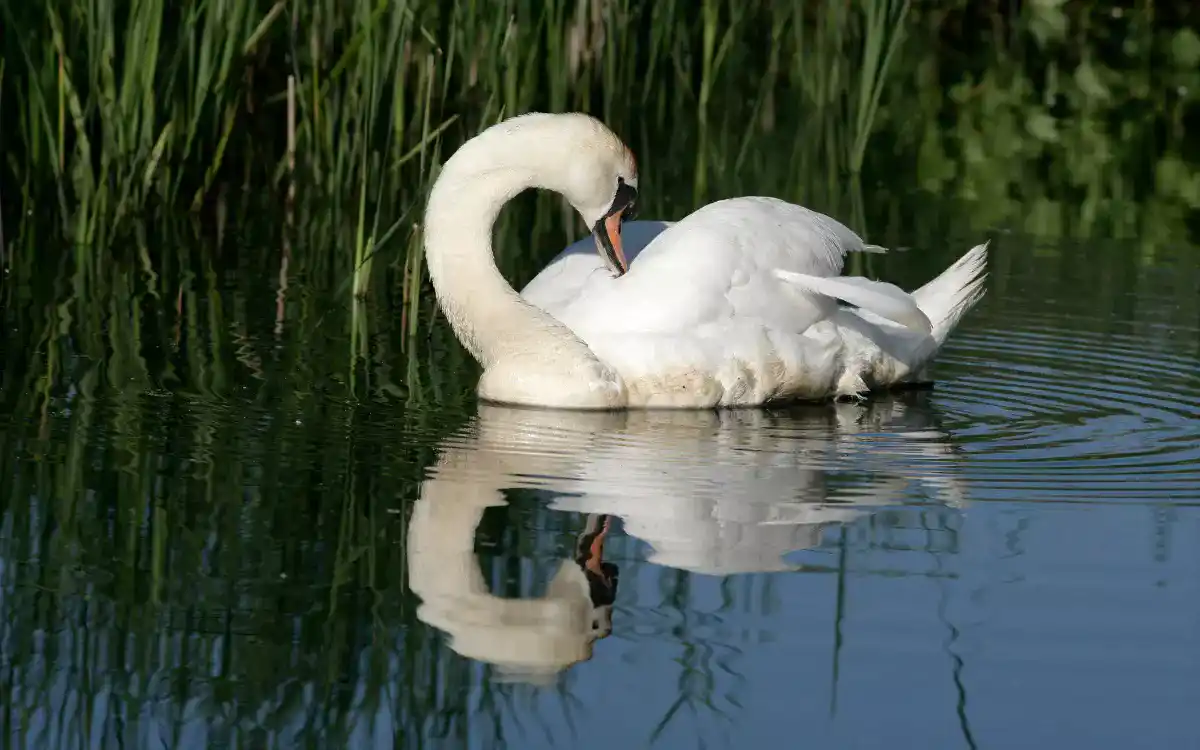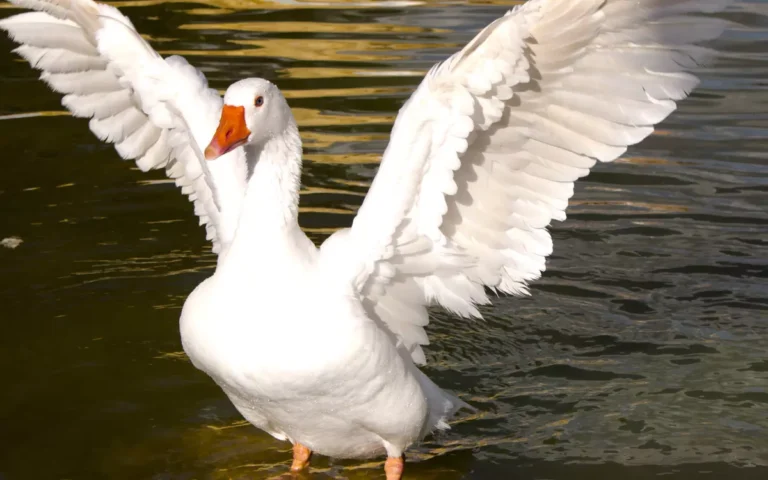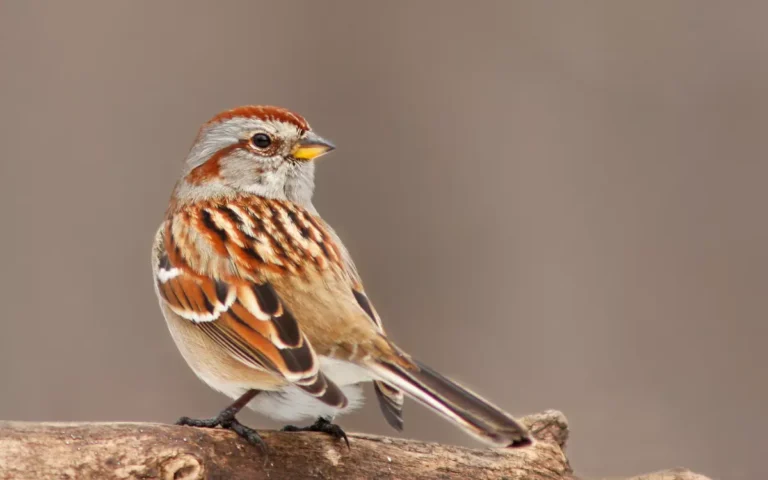8 White Birds in West Virginia (ID & INFO)

We have collected 8 pure & unique white birds that are found in West Virginia including the Snow Goose, Great Egret, and Whooping Crane, all playing key roles in the state’s diverse ecosystems.
We have collected all 8White Birds’ information read below & learn more:
1. American White Pelican (Pelecanus erythrorhynchos):

- Kingdom: Animalia
- Phylum: Chordata
- Class: Aves
- Order: Pelecaniformes
- Family: Pelecanidae
- Genus: Pelecanus
- Species: P. erythrorhynchos
The American White Pelican is a large, striking bird with a white body and black wing tips. It’s known for its enormous bill and expandable throat pouch. These birds are migratory, traveling in large flocks to freshwater lakes in summer and coastal waters in winter.
They primarily eat fish, which they catch by working together to herd their prey. Nesting occurs on isolated islands where disturbances are minimal. Each pair usually lays two eggs annually.
A fun fact about them: despite their size, American White Pelicans are incredibly graceful flyers, often seen soaring high in the sky with minimal wing flaps.
- Length: 50.0-65.0 in (127-165 cm)
- Weight: 158.7-317.5 oz (4500-9000 g)
- Wingspan: 96.1-114.2 in (244-290 cm)
2.Mute Swan (Cygnus olor):

- Kingdom: Animalia
- Phylum: Chordata
- Class: Aves
- Order: Anseriformes
- Family: Anatidae
- Genus: Cygnus
- Species: Cygnus olor
The Mute Swan is a beautiful bird known for its all-white feathers and distinctive orange beak with a black base. These swans are often seen in ponds and lakes, gracefully floating on the water.
They mainly eat aquatic plants, small fish, and insects. Mute Swans build large nests near the water’s edge. In a typical year, a Mute Swan couple might lay five to seven eggs.
fun fact: Despite their elegant appearance, Mute Swans are known to be quite territorial and can be aggressive if approached too closely during the nesting season.
- Length: 50.0-63.0 in (127-160 cm).
- Weight: 194.0-504.4 oz (5500-14300 g).
- Wingspan: 81.9-93.7 in (208-238 cm)
3. Snowy Owl (Bubo scandiacus):

- Kingdom: Animalia
- Phylum: Chordata
- Class: Aves
- Order: Strigiformes
- Family: Strigidae
- Genus: Bubo
- Species: Bubo scandiacus
The Snowy Owl is a remarkable bird with pure white feathers and yellow eyes, making it one of the most distinctive owls. Adapted to cold environments, it has thick plumage and can camouflage in snowy landscapes.
These owls are nomadic, appearing in West Virginia mostly during winter when they migrate south from the Arctic. Their diet mainly consists of rodents and small mammals. Snowy Owls nest on the ground in the Arctic tundra, and females can lay three to eleven eggs, depending on food availability.
A fun fact: Snowy Owls can swivel their heads 270 degrees! They are currently listed as vulnerable due to habitat threats and climate change, with conservation efforts focusing on protecting their breeding and wintering grounds.
- Length: 20.5-27.9 in (52-71 cm)
- Weight: 56.4-104.1 oz (1600-2950 g)
- Wingspan: 49.6-57.1 in (126-145 cm)
4. Trumpeter Swan (Cygnus buccinator):

- Kingdom: Animalia
- Phylum: Chordata
- Class: Aves
- Order: Anseriformes
- Family: Anatidae
- Genus: Cygnus
- Species: Cygnus buccinator
The Trumpeter Swan is the largest native swan in North America, easily out-sizing other local swans like the Mute Swan. These swans have pure white feathers and a long, straight black bill. They are known for their loud, trumpeting calls.
In West Virginia, Trumpeter Swans breed in large wetlands, often reusing the same nesting site each year. They build huge nests out of vegetation. Typically, a female lays three to five eggs annually.
Recovery efforts for this species have been successful, with populations increasing due to protection of habitats and reintroduction programs.
A fact: despite their size, Trumpeter Swans are very agile flyers!
- Length: 54.3-62.2 in (138-158 cm)
- Weight: 2716-4480 oz (7700-12700 g)
- Wingspan: approxmately 79.9 in (203 cm)
5. Tundra Swan (Cygnus columbianus):

- Kingdom: Animalia
- Phylum: Chordata
- Class: Aves
- Order: Anseriformes
- Family: Anatidae
- Genus: Cygnus
- Species: Cygnus columbianus
The Tundra Swan is a graceful bird with white feathers and a black bill with a yellow spot near the eye. These swans are smaller than the Trumpeter Swan, making them easier to distinguish for birdwatchers. During migration, Tundra Swans pass through West Virginia, usually seen in wetlands and lakes.
Their diet mainly includes aquatic plants and small invertebrates. Tundra Swans nest on the ground near water bodies in the Arctic tundra, where the female typically lays two to five eggs each year.
A fun fact: Tundra Swans have been known to travel over 4,000 miles during their migratory journeys!
- Length: 47.2-57.9 in (120-147 cm)
- Weight: 134.0-370.4 oz (3800-10500 g)
- Wingspan: about 66.1 in (168 cm)
Read also: Red, Orange & Yellow Birds Of West Virginia
6.Great Egret (Ardea alba):

- Kingdom: Animalia
- Phylum: Chordata
- Class: Aves
- Order: Pelecaniformes
- Family: Ardeidae
- Genus: Ardea
- Species: Ardea alba
The Great Egret is an elegant bird with long white feathers, a slender neck, and a sharp yellow bill. It plays a crucial role in aquatic food chains, primarily feeding on fish, frogs, and small mammals, which it catches with quick thrusts of its bill.
In West Virginia, Great Egrets are commonly found in wetlands and along rivers during the breeding season. They build their nests high in trees near water.Each year, females lay three to four eggs. Conservation efforts focus on protecting their wetland habitats from pollution and development.
A fact: The Great Egret is the symbol of the National Audubon Society, an organization dedicated to the conservation of birds and their habitats!
- Length: 37.0-40.9 in (94-104 cm)
- Weight: approximately 35.3 oz (1000 g)
- Wingspan: 51.6-57.1 in (131-145 cm)
7. Whooping Crane (Grus americana):

- Kingdom: Animalia
- Phylum: Chordata
- Class: Aves
- Order: Gruiformes
- Family: Gruidae
- Genus: Grus
- Species: Grus americana
The Whooping Crane is one of the rarest birds in North America, notable for its striking white body, red crown, and long black-tipped wings. It plays a significant role in the biodiversity of the ecosystems it inhabits, feeding on crabs, frogs, and aquatic plants.
Historically, Whooping Cranes visited West Virginia during migrations, but sightings are rare today. Current efforts to restore their population include breeding programs and habitat conservation, especially in their wintering and breeding grounds. Whooping Cranes lay one to two eggs annually.
A fun fact: These cranes are known for their loud, whooping calls, which can be heard over long distances! Conservation measures are critical to prevent their extinction, highlighting their importance in wildlife preservation.
- Length: 51.2-63.0 in (130-160 cm)
- Weight: 204.6-317.5 oz (5800-9000 g)
- Wingspan: 78.7-90.6 in (200-230 cm)
8.Snow Goose (Anser caerulescens):

- Kingdom: Animalia
- Phylum: Chordata
- Class: Aves
- Order: Anseriformes
- Family: Anatidae
- Genus: Anser
- Species: Anser caerulescens
The Snow Goose is mostly white with black wingtips, visible in flight. Some have a “blue morph” with bluish-grey feathers. They are migratory birds, often seen in West Virginia during winter.
Their diet includes grasses, grains, and aquatic plants. Snow Geese nest on the ground in the Arctic tundra, creating shallow scrapes lined with plant material. Each year, females lay three to five eggs.
A fun fact: Snow Geese can travel thousands of miles during migration, flying in large, noisy flocks that form a V-shaped pattern in the sky.
- Length: 27.2-32.7 in (69-83 cm)
- Weight: 56.4-116.4 oz (1600-3300 g)
- Wingspan: about 54.3 in (138 cm)
Bird watching tips & place :
Viewing white birds in West Virginia is best in wetlands, rivers, and lakes. Visit national parks and wildlife refuges like the Ohio River Islands or Canaan Valley. Early morning or late afternoon offers the best chances to see these birds. Bring binoculars and a bird guide.
Remember to stay quiet and maintain a distance to avoid disturbing them. Check out the Unique Largest Birds In West Virginia for more amazing bird watching experiences. Happy birdwatching!
Conservation and Challenges:
Many white birds in West Virginia face threats like habitat loss, pollution, and climate change. Efforts to protect them include creating wildlife refuges, restoring wetlands, and enforcing pollution controls. Conservation groups work hard to ensure these birds and their habitats stay safe and healthy for the future.
FAQs :
Q: What is the best time of year to observe white birds in West Virginia?
Ans: Spring and fall migration periods are ideal for observing white birds as many species pass through West Virginia during these times.
Q: Can I participate in bird conservation activities as a beginner?
Ans: Absolutely! Conservation groups often welcome volunteers of all skill levels and provide training and resources to get started.
Q: What kind of habitat do white birds prefer in West Virginia?
Ans: Many white birds favor wetlands, lakes, and river areas where they can find food and nesting sites.
Q: How are conservation efforts impacting white bird populations in West Virginia?
Ans: Conservation efforts, such as habitat restoration and protection from pollution, have positively impacted populations of species like the Trumpeter Swan and Great Egret.
Q: Why is it important to maintain a distance from nesting areas of white birds?
Ans: Disturbing nesting birds can lead to abandonment of nests and loss of chicks, so maintaining a respectful distance helps ensure their survival.
Q: What should I bring when going birdwatching for white birds?
Ans: A good pair of binoculars, a field guide to help with identification and a camera for taking non-intrusive photos are essential.
Q: Are there any educational programs in West Virginia that focus on white birds?
Ans: Yes, local wildlife centers and conservation organizations frequently offer educational programs and birdwatching tours.
Conclusion:
White Birds in West Virginia help keep nature healthy and balanced. By taking part in local bird-saving activities, you can help protect these beautiful birds and make sure West Virginia stays a wonderful place for wildlife.






